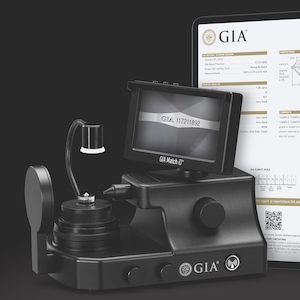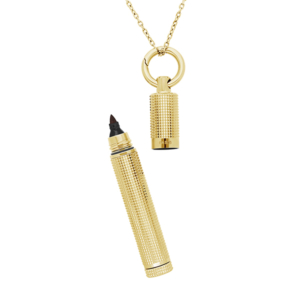
The Gemological Institute of America (GIA) announced Tuesday that, by 2025, its lab will issue only digital grading reports, ending more than 50 years of providing paper documents.
In January 2023, its most popular report, the Diamond Dossier, will be digital only. Paper reports will be completely phased out over the next two years.
“It’s a big change,” admits Pritesh Patel, GIA senior vice president and chief operating officer. “We have been in constant communication with retailers around the world. There are some that have been asking us to go digital for a while. I’m sure there are some who will still want paper reports, but the majority are ready for this.”
Now, instead of a report, graded diamonds will be returned with a QR code. The digital reports can then be accessed by scanning the QR code or by entering the inscription number into GIA’s online report check. In addition, some high-volume users can obtain the reports via an API (application programming interface).
When a user scans the QR code, the digital grading reports will show up in the GIA’s new app. The reports can be stored in the user’s Apple Wallet.
The new app, which will debut Friday, will be made for both consumers and tradespeople, and will include an interactive guide to the 4Cs as well as GIA-provided articles and videos.
Eventually, information about the diamond’s source and other topics may be added to the app, Patel says.
GIA is also considering offering a service that will let customers convert their old paper reports to the new digital format.
Along with the digital reports, GIA is launching a new service, Match iD, which will use proprietary artificial intelligence (AI) technology to match inscribed diamonds with their digital GIA grading reports. The service is aimed at stopping incidents where diamonds were sold with mismatched reports.
“Our AI technology will be able to identify counterfeit inscriptions,” Patel says. “It can see if any alterations have happened. So even if someone cuts the diamond to the same specifications [as the original graded diamond], when the machine takes the image, our AI is smart enough to know that it is not the same diamond.”
Using the service requires the purchase of a $695 GIA Match iD instrument. The device will be available in the fall and will initially include a limited-time no-cost service subscription. (Eventually, though, there will be a subscription fee.)
The Match iD information will be collected only for newer diamonds that have digital reports. GIA will first collect the information for the Diamond Dossier stones, then for the rest.
Patel says going completely digital offers “a great sustainability story,” noting it will save 20 tons of paper and 18.5 tons of plastic each year and reduce transportation-related carbon emissions.
https://www.youtube.com/watch?v=HsfgegjLmXI
More information on GIA’s plans will be provided at a JCK Talks session during JCK Las Vegas, Unfolding the Digital Future of GIA Reports. The session will be held Friday, June 10, on the Showcase Stage, The Venetian Expo, level 2, at 12–12:45 p.m. Pacific Time.
Photo courtesy of GIA
- Subscribe to the JCK News Daily
- Subscribe to the JCK Special Report
- Follow JCK on Instagram: @jckmagazine
- Follow JCK on X: @jckmagazine
- Follow JCK on Facebook: @jckmagazine







